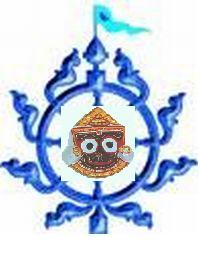|
Jaya
Jagannath,
Ever been to Khajuraho or
Konark Temple? We often wonder why do Hindu Temples have
objectionable sculptures on walls. Well to the crude they are
objectionable, yet as per our Shastras and Upanishads they are in
fact opaque symbolic portrayals of the state of union with God.
Within the vast confines of Hinduism one encounters many approaches
to demonstrating spiritual ideas. Mithuna carvings are just one.
Mithuna, in fact means, the state of being united. The Bruhadaranyka
Upanishad says
1. Just as a human being closely embraced by another knows nothing
more without or within, so also a spiritual person embraced by God
knows nothing more of without or within. This is his true form in
which his desire (worldly) is satisfied. He has neither desire nor
any pain. Thus mithuna is a human symbol of the total involvement in
God required for Moksha-ultimate release from the material world of
life-death cycles. Moksha is attained by approaching the Lord in a
mandir where such carvings constantly remind him of his true goal in
life. the attainment of pure divine bliss by being totally engrossed
in the Lord.
2. The mithuna symbols also express a series of particular
philosophic beliefs concerning the architecture of the whole
creation. In the beginning was Purusha (an aspect of God) who
architected purushartha. The joy of human union raised to the nth
degree is regarded as spiritual attainment of union of soul with
divine. Body is the physical manifestation of our inner life.
Mithuna sculpture on temples is, therefore, an outer manifestation
of man's inward aesthetic pleasure. The arts of mithuna are
essential for fulfilling the three basic aims of life, viz., Kama,
Artha and Dharma.
4. The mithunas are symbols of Shakti and vigor in one God -
representing the oneness of God, or the spiritual syllable
OUM.
They are representations of supreme bliss, an attempt in earthly
terms to convey the meaning of heavenly rapture. The mithunas are
temptations to laud thoughts, but are to be overcome by the devout.
They are just innocent depictions of a human activity in the same
way as other sculptures show scenes of dancing, fighting, making
music, praying, etc. The mithunas were intended as a protection
against the evil eye, 'lightening" etc. They are straight forward
representations of Yogic postures.
Having taken into account the various theories about the
significance of representations of these postures in mandirs, and
examining them in light, it is justified that it is one among the
four purusharthas (Dharma, Artha, Kama) leading to moksha. The whole objective of this mail to spread the essence
of the ultimate truth of life. Life is a gateway
to merge with GOD. Jaya Jagannath. Regards
Team Nilachakra |
